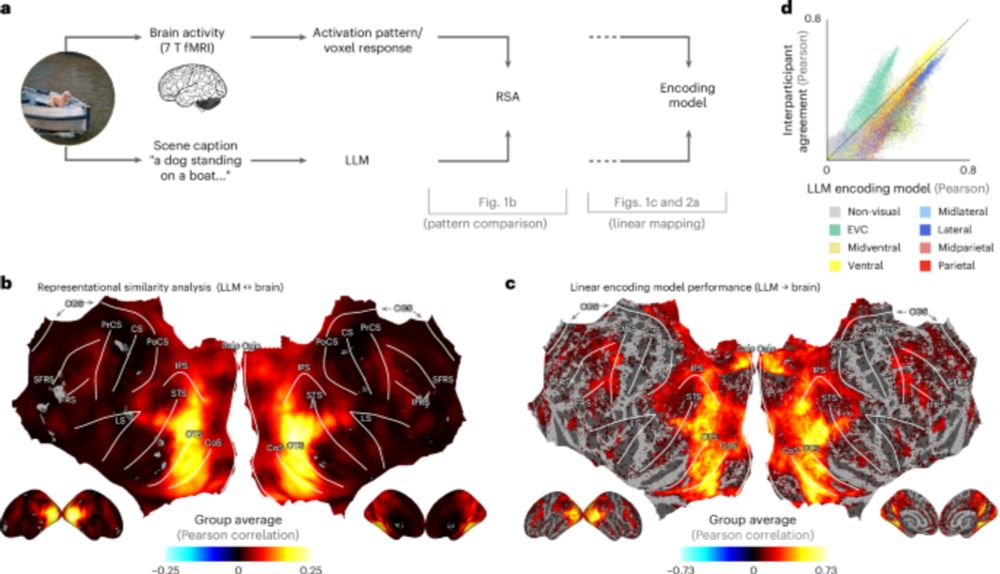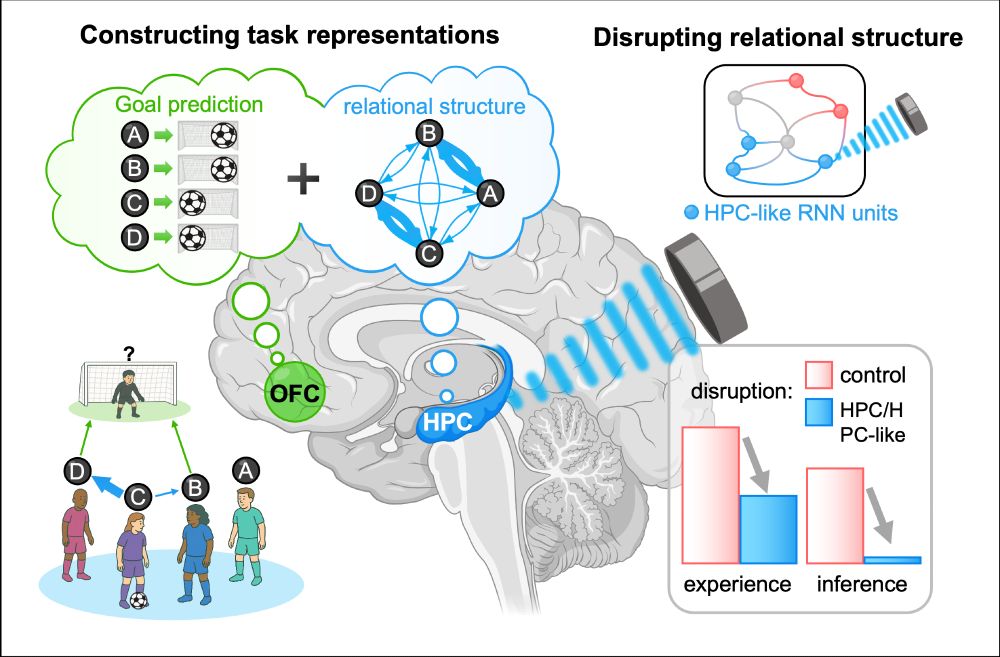Adrien Doerig
@adriendoerig.bsky.social
1.4K followers
420 following
72 posts
Cognitive computational neuroscience, machine learning, psychophysics & consciousness.
Currently Professor at Freie Universität Berlin, also affiliated with the Bernstein Center for Computational Neuroscience.
Posts
Media
Videos
Starter Packs
Reposted by Adrien Doerig
Reposted by Adrien Doerig
Reposted by Adrien Doerig
Reposted by Adrien Doerig
Reposted by Adrien Doerig
Reposted by Adrien Doerig
Matthias Nau
@matthiasnau.bsky.social
· Sep 4

A transformation from vision to imagery in the human brain
Extensive work has shown that the visual cortex is reactivated during mental imagery, and that models trained on visual data can predict imagery activity and decode imagined stimuli. These findings ma...
www.biorxiv.org
Reposted by Adrien Doerig
GerstnerLab
@gerstnerlab.bsky.social
· Sep 4

Context selectivity with dynamic availability enables lifelong continual learning
“You never forget how to ride a bike”, – but how is that possible? The brain is able to learn complex skills, stop the practice for years, learn other…
www.sciencedirect.com
Reposted by Adrien Doerig
Reposted by Adrien Doerig
Reposted by Adrien Doerig
Martin Hebart
@martinhebart.bsky.social
· Jun 23

Dimensions underlying the representational alignment of deep neural networks with humans - Nature Machine Intelligence
An interpretability framework that compares how humans and deep neural networks process images has been presented. Their findings reveal that, unlike humans, deep neural networks focus more on visual ...
www.nature.com
Reposted by Adrien Doerig
Reposted by Adrien Doerig
Open Mind
@openmindjournal.bsky.social
· Aug 23
Merits of Curiosity: A Simulation Study
Abstract‘Why are we curious?’ has been among the central puzzles of neuroscience and psychology in the past decades. A popular hypothesis is that curiosity is driven by intrinsically generated reward signals, which have evolved to support survival in complex environments. To formalize and test this hypothesis, we need to understand the enigmatic relationship between (i) intrinsic rewards (as drives of curiosity), (ii) optimality conditions (as objectives of curiosity), and (iii) environment structures. Here, we demystify this relationship through a systematic simulation study. First, we propose an algorithm to generate environments that capture key abstract features of different real-world situations. Then, we simulate artificial agents that explore these environments by seeking one of six representative intrinsic rewards: novelty, surprise, information gain, empowerment, maximum occupancy principle, and successor-predecessor intrinsic exploration. We evaluate the exploration performance of these simulated agents regarding three potential objectives of curiosity: state discovery, model accuracy, and uniform state visitation. Our results show that the comparative performance of each intrinsic reward is highly dependent on the environmental features and the curiosity objective; this indicates that ‘optimality’ in top-down theories of curiosity needs a precise formulation of assumptions. Nevertheless, we found that agents seeking a combination of novelty and information gain always achieve a close-to-optimal performance on objectives of curiosity as well as in collecting extrinsic rewards. This suggests that novelty and information gain are two principal axes of curiosity-driven behavior. These results pave the way for the further development of computational models of curiosity and the design of theory-informed experimental paradigms.
dlvr.it
Reposted by Adrien Doerig
Reposted by Adrien Doerig
Reposted by Adrien Doerig
Reposted by Adrien Doerig
Nico Schuck
@nicoschuck.bsky.social
· Aug 22

Replay in the human visual cortex during brief task pauses is linked to implicit learning of successor representations | PNAS
Humans can implicitly learn about multistep sequential relationships between events
in the environment from their statistical co-occurrence. Theore...
www.pnas.org
Reposted by Adrien Doerig
Sushrut Thorat
@sushrutthorat.bsky.social
· Aug 24
Reposted by Adrien Doerig
Jin Ke
@jinke.bsky.social
· Aug 20

Ongoing thoughts at rest reflect functional brain organization and behavior
Resting-state functional connectivity (rsFC)-brain connectivity observed when people rest with no external tasks-predicts individual differences in behavior. Yet, rest is not idle; it involves streams...
www.biorxiv.org












